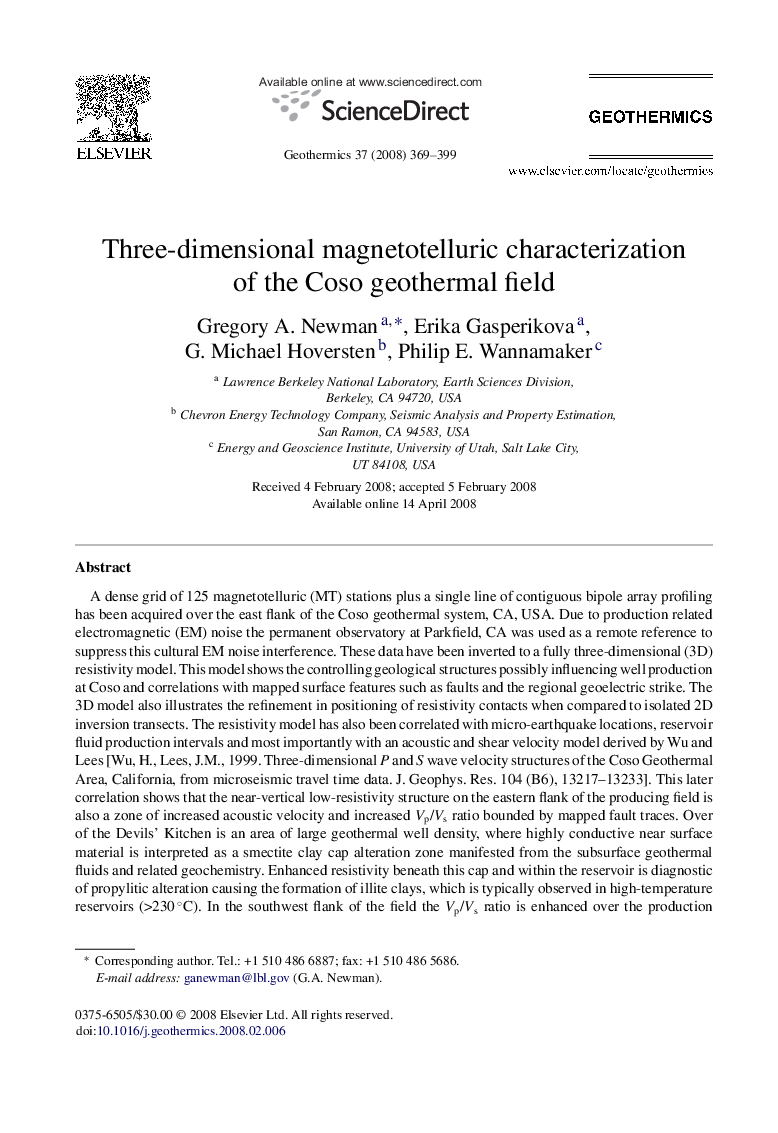| Article ID | Journal | Published Year | Pages | File Type |
|---|---|---|---|---|
| 1742681 | Geothermics | 2008 | 31 Pages |
Abstract
A dense grid of 125 magnetotelluric (MT) stations plus a single line of contiguous bipole array profiling has been acquired over the east flank of the Coso geothermal system, CA, USA. Due to production related electromagnetic (EM) noise the permanent observatory at Parkfield, CA was used as a remote reference to suppress this cultural EM noise interference. These data have been inverted to a fully three-dimensional (3D) resistivity model. This model shows the controlling geological structures possibly influencing well production at Coso and correlations with mapped surface features such as faults and the regional geoelectric strike. The 3D model also illustrates the refinement in positioning of resistivity contacts when compared to isolated 2D inversion transects. The resistivity model has also been correlated with micro-earthquake locations, reservoir fluid production intervals and most importantly with an acoustic and shear velocity model derived by Wu and Lees [Wu, H., Lees, J.M., 1999. Three-dimensional P and S wave velocity structures of the Coso Geothermal Area, California, from microseismic travel time data. J. Geophys. Res. 104 (B6), 13217-13233]. This later correlation shows that the near-vertical low-resistivity structure on the eastern flank of the producing field is also a zone of increased acoustic velocity and increased Vp/Vs ratio bounded by mapped fault traces. Over of the Devils' Kitchen is an area of large geothermal well density, where highly conductive near surface material is interpreted as a smectite clay cap alteration zone manifested from the subsurface geothermal fluids and related geochemistry. Enhanced resistivity beneath this cap and within the reservoir is diagnostic of propylitic alteration causing the formation of illite clays, which is typically observed in high-temperature reservoirs (>230 °C). In the southwest flank of the field the Vp/Vs ratio is enhanced over the production intervals, but the resistivity is non-descript. It is recommended that more MT data sites be acquired to the south and southwest of Devil's Kitchen to better refine the resistivity model in this area.
Related Topics
Physical Sciences and Engineering
Earth and Planetary Sciences
Geochemistry and Petrology
Authors
Gregory A. Newman, Erika Gasperikova, G. Michael Hoversten, Philip E. Wannamaker,
